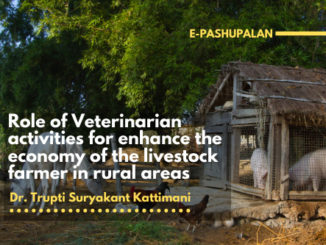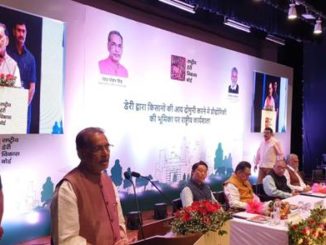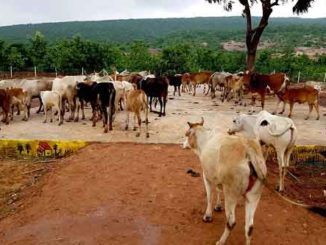Department of Animal Husbandry & Dairying, Ministry of Fisheries, Animal Husbandry and Dairying has released the 20th Livestock Census report today. The Census will prove beneficial not just for policy makers but also for agriculturists, traders, entrepreneurs, dairying industry and masses in general. This release provides some key results reflecting the aggregate counts of various species as well as its comparison with previous census.
The following are the key results of the 20th Livestock Census:
- The total Livestock population is 535.78 million in the country showing an increase of 4.6% over Livestock Census-2012
- Total Bovine population (Cattle, Buffalo, Mithun and Yak) is 302.79 Million in 2019 which shows an increase of about 1% over the previous census.
- The total number of cattle in the country in 2019 is 192.49 million showing an increase of 0.8 % over previous Census.
- The Female Cattle (Cows population) is 145.12 million, increased by 18.0% over the previous census (2012).
- The Exotic/Crossbred and Indigenous/Non-descript Cattle population in the country is 50.42 million and 142.11 million respectively.
- The Indigenous/Non-descript female cattle population has increased by 10% in 2019 as compared to previous census.
- The population of the total Exotic/Crossbred Cattle has increased by 26.9 % in 2019 as compared to previous census.
- There is a decline of 6 % in the total Indigenous/ Non-descript cattle population over the previous census. However, the pace of decline of Indigenous/ Non-descript cattle population during 2012-2019 is much lesser than as compared to the 2007-12 which was about 9%.
- The total buffaloes in the country is 109.85 million showing an increase of about 1.0% over previous Census.
- The total milch animals (in-milk and dry) in cows and buffaloes is 125.34 million, an increase of 6.0 % over the previous census.
- The total sheep in the country is 74.26 million in 2019, increased by 14.1% over previous Census.
- The Goat population in the country in 2019 is 148.88 million showing an increase of 10.1% over the previous census.
- The total Pigs in the country is 9.06 Million in the current Census, declined by 12.03% over the previous Census.
- The other livestock including mithun, yak, horses, ponies, mule, donkeys, camel together contribute around 0.23% of the total livestock and their total count is 1.24 million.
- The total poultry in the country is 851.81 million in 2019, registered an increase of 16.8% in the total poultry.
- The total birds in the backyard poultry in the country is 317.07 million. The backyard poultry has increased by around 46% as compared to previous Census.
- The total Commercial Poultry in the country is 534.74 million in 2019, increased by 4.5% over previous Census.
(N.B: For Delhi, 19th livestock census figures are used)
The Livestock Census has been conducted in the country periodically since 1919-20. The Livestock Census covers all domesticated animals and its headcounts. So far 19 such censuses have been conducted in participation with State Governments and UT Administrations. The 20th Livestock Census was conducted in participation with all States and Union Territories. The enumeration was done both in rural and urban areas. Various species of animals (Cattle, Buffalo, Mithun, Yak, Sheep, Goat, Pig, Horse, Pony, Mule, Donkey Camel, Dog, Rabbit and Elephant)/poultry birds (Fowl, Duck, Emu, Turkeys, Quail and other poultry birds) possessed by the households, household enterprises/non-household enterprises and institutions have been counted at their site.
The major thrust given to 20th Livestock Census is the collection of data through tablets computers. The 20th livestock census is indeed a unique attempt as for the first time such a major initiative has been take to digitise household level data through online transmission from the field. National Informatics Centre (NIC) has developed a mobile Application software and was used for data collection as well as online transmission of data from the field to the NIC server. Since India is a vast country endowed with huge wealth of livestock, it is really a challenge to collect data in an online platform especially with breed-wise and age–structure composition. Crossing these challenges, data of more than 27 Crores of households and non-households have been collected in the 20th Livestock Census to assess and arrive at the livestock and poultry count in the country.
In this whole Census operations, The State/UT Governments engaged more than 80000 field personnel who are mostly veterinarians and para-veterinarians for the smooth conduct of 20th Livestock Census. Training was an important component of the Census as for the first time the field staff were required to operate tablet computers for such massive Census Operation. Training was conducted at various levels starting from “All India Training Workshop for Trainers” at Delhi, followed by State, District level training. Apart from training, Training Manual, Tutorial video, online e-learning classes etc. have been arranged.






Be the first to comment